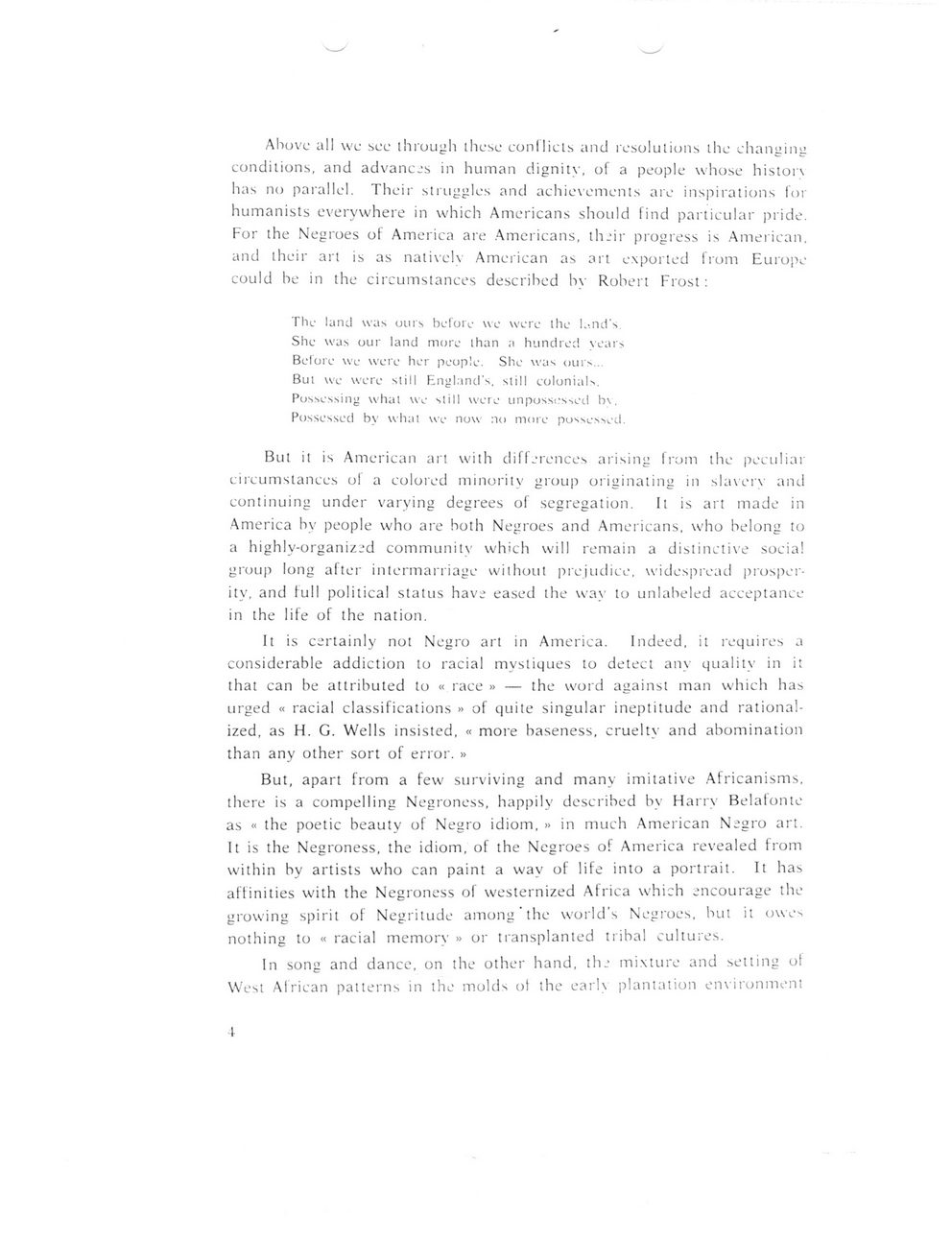This text was obtained via automated optical character recognition.
It has not been edited and may therefore contain several errors.
Above all \vc sec through these conflicts and resolutions the changing conditions, and advances in human dignity, of a people whose histor\ has no parallel. Their struggles and achievements are inspirations for humanists everywhere in which Americans should find particular pride. For the Negroes of America are Americans, their progress is American, and their art is as natively American as art exported Irom Europe could he in the circumstances described by Robert Frost : The land was ours before wc were the L-.nd's. She was our land more than a hundred wars Belorc we were her people. She was ours... But we were still England's, still colonials. Possessing w hat we still were unpossessed b\. Possessed by what we now no more possessed. But it is American art with differences arising from the peculiar circumstances of a colored minority group originating in slavery and continuing under varying degrees of segregation. It is art made in America by people who are both Negroes and Americans, who belong to a highly-organized community which will remain a distinctive social group long after intermarriage without prejudice, widespread prosperity, and full political status have eased the wav to unlabeled acceptance in the life of the nation. It is certainly not Negro art in America. Indeed, it requires a considerable addiction to racial mystiques to detect any quality in it that can be attributed to ? race ? ? the word against man which has urged ? racial classifications ? of quite singular ineptitude and rationalized, as H. G. Wells insisted, ? more baseness, cruelty and abomination than any other sort of error. ? But, apart from a few? surviving and many imitative Africanisms, there is a compelling Negroness, happily described by Harry Belafonte as ? the poetic beauty of Negro idiom, ? in much American Negro art. It is the Negroness, the idiom, of the Negroes of America revealed from within by artists who can paint a way of life into a portrait. It has affinities with the Negroness ol westernized Africa which encourage the growing spirit of Negritude among the world's Negroes, but it owes nothing to ? racial memory ? or transplanted tribal cultures. In song and dance, on the other hand, the mixture and setting ol West African patterns in the molds ol the early plantation environment 1

Barthe, Richmond American-Negro-Art-03